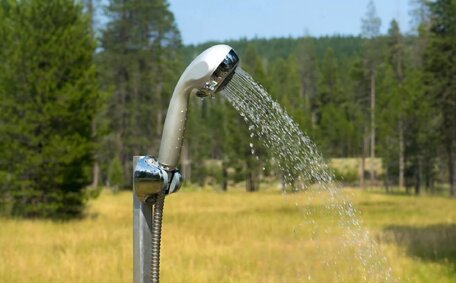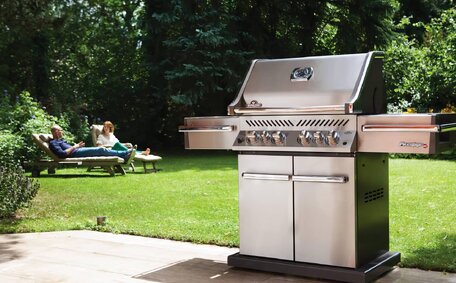Understanding Proper Gas Appliance Disposal
Safe and environmentally responsible practices are essential when arranging for gas cylinder recycling and the disposal of old gas appliances. Improper disposal of appliances like gas stoves, cooktops, and hot water systems poses safety risks and environmental damage due to their hazardous contents.
Before disposal, you should thoroughly empty and clean your old gas appliances of any chemical residues. A qualified gas fitter should be engaged to safely disconnect appliances, ensuring they no longer emit gas, with assessments at certified test stations when necessary.
It is imperative to turn off the cylinder valve and empty gas cylinders thoroughly prior to disposal. These precautions are essential to prevent hazardous leaks or explosions during gas disposal.
To support your household’s needs for the collection recycling of old gas appliances and gas cylinders, many councils offer household chemical cleanout days where you can get your old units safely disposed of, or alternatively, you can drop them off at certified locations.
Safely recyclable components like metal, high-quality plastic, and glass from your old appliances contribute to effective resource management. Check with your local waste facilities as fees and services vary, especially when it’s time to recycle large gas appliances. Some waste management centres offer the convenience where you can drop off your old gas appliances for recycling at no charge, often in designated 'recycling bins’.
If they still function, it’s thoughtful to donate appliances to charity, ensuring others benefit from the continued use of your old items. You can also consider selling usable appliances as another option. First, make certain that the appliance is in safe working condition with gas valves securely turned off.
While the disposal process for appliances and electronic devices like dryers and air systems varies, the priority is minimising environmental harm from hazardous materials. Cautious planning and care enable the responsible recycling or disposal of items, like split systems, thus protecting both the environment and personal safety.
Identifying Hazardous Materials in Old Gas Appliances
Old gas appliances, such as your cooker, often contain hazardous materials that without special handling can cause notable environmental harm. Key things to look out for include:
- Refrigerants - Cooling substances such as CFCs, HCFCs, and HFCs, present in fridges, washing machines and split systems, are recyclable materials. They contribute to ozone depletion and global warming if released.
- Insulating foams - Contain greenhouse gases like CFCs and HCFCs. Professional removal is required to prevent their release into the environment.
- Mercury switches - Used to regulate temperature or current. These are toxic upon spillage and necessitate secure disposal.
- Fuel gas residues - Flammable gases, which can become a greenhouse gas if released into atmosphere, like natural gas or LPG if not fully drained before disposal.
- Asbestos - Historically used as insulation, can be very harmful, posing a serious health risk if fibres are inhaled.
Ideally, Before recycling or landfill processing, a licensed technician should safely remove any hazardous materials from appliances. Proper degassing, containment, and disposal of harmful gases are essential to prevent environmental damage.
Preparing Appliances for Transport
When preparing gas appliances for transport to recycling or waste facilities, gas safety should be the top priority.
Begin by enlisting a licensed gasfitter to help turn off and disconnect supply lines, which will prevent gas leakage from appliances like washing machines and ensure they are safe. They will ensure gas valves are in the 'off’ position and evacuate any residual gases from LPG cylinders or canisters for safe disposal.
Secure items like gas cylinders during transportation to prevent shifting, ensuring secure and environmentally conscious disposal. Tape doors shut on fridges and freezers. Protect surfaces that could easily be dented or scratched while being moved.
Inquire at local recycling and management centres about any specific preparation requirements they may have. Fees, opening hours and policies outlining how you can safely dispose of old gas appliances can vary amongst recycling and waste management centres.
With hazardous materials and gases involved, it’s crucial that you take extra care when transporting these items on your own. Acting with care and looking to seek advice from professionals minimises the risks involved in these tasks.
Finding Local Recycling and Disposal Options
In the Peakhurst area of Sydney, there are a few options for recycling or properly disposing of old gas appliances.
Reach out to your local council for information on household chemical cleanout days, which are specially designated for the safe disposal of hazardous items. Fees may apply but often include pick-up.
Alternatively, The Rockdale Resource Recovery Centre, a veritable lane resource trove, welcomes a variety of household items, including most types of household appliances such as stoves, gas heaters, and more. Small fees start from around $20 for drop-off. Ensure appliances are safe before transporting them.
For old gas cylinder disposal, Sims Metal Management provides recycling at their Rockdale location, which safely captures residual gases. Charges are based on cylinder size.
Planet Ark, Vinnies, and Salvos may collect functioning appliances for resale or redistribution. Contact them about any pickup policies and fees.
When exploring options, always ask about preparations needed for transportation and drop-off. Proper disposal minimises environmental impact and safety risks in our community.
Leveraging Retailer Take-Back Programs
When purchasing a new gas appliance, it’s worth asking retailers if they have a programme for taking back appliances that are no longer functioning. This involves collecting your old appliance for responsible recycling when they deliver the new one.
Most major appliance retailers like The Good Guys, Appliances Online, and Winning Appliances participate in government-accredited programmes to safely recycle your old gas appliances. There may be small fees involved with transportation or processing.
Take-back services offer a convenient solution for the sustainable disposal of items such as cooktops and hot water systems. The retailers coordinate safe decommissioning and recycling to prevent old units from ending up in landfill.
So when investing in upgraded household gas appliances, leverage these take-back offers. These programs ensure proper handling of hazardous components instead of accumulation at home. Just confirm your retailer has such a programme when arranging purchase and delivery.
Working with Specialized Disposal Services
For safe and legal gas appliance disposal, specialised services are worth considering despite potential extra costs. They employ degassing techniques to remove harmful gases and have licenced technicians to handle hazardous components.
Search for 'appliance recyclers’ or 'white goods disposal’ to find local companies that offer responsible recycling and waste diversion services. Expect fees around $50-100 for collecting items from your home, depending on weight and travel distance.
Alternatively, some scrap metal recyclers and yards also cater to gas appliances. But ensure they capture refrigerants and insulating agents instead of venting them. Ensure metal recyclers adhere to best practices for hazardous waste management.
When comparing services, learn more about their processes, and look for waste transport licences as an assurance of compliance. Documented proof of full degassing and responsible disposal brings peace of mind.
While pricier than basic trash collection, these specialised companies prevent toxic substances from being released and ensure we all contribute to a cleaner environment.
Following Safety Procedures
Adhere to the following crucial safety procedures when managing old gas appliances:
- Ensure a licensed technician turns off the gas supply and confirms appliance decommission.
- Wear protective gear like gloves and eye protection when moving appliances.
- Secure doors and lids so they don’t fall open during transport.
- Carefully load items into vehicles, strapping large appliances in place if necessary.
- Drive cautiously and avoid sudden braking that could shift heavy appliances.
- At waste facilities, follow all safety protocols and signage for hazardous materials and gas bottles.
- Provide staff details on appliance contents and gases for proper sorting and processing.
Adopting fundamental precautions reduces risks associated with disposing of obsolete gas appliances for all parties involved. If ever unsure about how to safely get rid of something, don’t hesitate to consult waste management specialists.
Understanding Regulations and Incentives
When disposing of gas appliances in Peakhurst, Sydney, there are a few key regulations to keep in mind.
Federal law imposes strict restrictions to prevent the venting of refrigerants and insulating foams into the atmosphere. Appliances must be properly degassed by qualified technicians before recycling.
There are also regulations from SafeWork NSW on handling appliances with asbestos insulation, requiring special disposal protocols.
Several local councils run regular household chemical cleanout days for the safe collection of hazardous goods, which include a host of items. Check if subsidies are available for drop-off fees.
The NSW government had rebate programmes to incentivise replacing old gas appliances, like fridges and washing machines, with energy-efficient models. While inactive now, similar incentives could return.
Regulations exist to mitigate environmental and safety risks linked to disposing of appliances at the end of their lifecycle. Being aware of requirements and incentives helps individuals and households handle the process responsibly.
Step-by-Step Gas Appliance Removal Process
When removing an old gas appliance, follow this safe step-by-step process:
- Contact a licenced gas fitter to turn off gas supply lines and ensure valves are properly closed.
- Disconnect any gas hoses or cylinders attached to the appliance and cap supply inlets.
- Use appliance manuals to locate screws or fasteners to remove panels and access gas components.
- Have the gas fitter drain any remaining fuel from lines and cylinders into an approved container.
- Wear gloves and eye protection when handling the appliance.
- Tape lids and doors shut so they don’t swing open during transportation.
- Carefully load the appliance onto a trolley or lifter to move it safely.
- Secure the appliance inside your vehicle so it doesn’t shift during transport.
- Drive directly to a waste management or recycling facility.
- On arrival, check in with staff and follow all safety procedures for hazardous waste drop-off.
Exercising caution at every stage can successfully facilitate the removal of old gas appliances from homes, ensuring they don’t slip back into the waste stream improperly.
Transporting Old Gas Appliances Safely
Ensure safety is the top priority when transporting old gas appliances like air conditioners for recycling or disposal.
A crucial first step is to have a licenced gas fitter ensure your devices, like fridges and washing machines, are completely disconnected from gas lines and that any cylinders have been emptied. Tape doors and lids shut and use straps or blankets to secure appliances in your vehicle so they don’t shift during transport.
Drive steadily and head straight to the recycling facility, avoiding sudden stops or acceleration. Avoid leaving appliances, particularly in direct sunlight, unattended in vehicles on sweltering days. Ignition of residual gases can occur when there’s excessive heat buildup in vehicles.
When unloading at facilities, carefully move using trolleys and lifters designed for bulky items. Follow all hazardous materials safety procedures indicated on site.
Exercising caution helps minimise risks when transporting obsolete appliances containing flammable gases or refrigerants. Even small precautions significantly enhance the safety of recycling or responsibly disposing of these items.
Comparing DIY Disposal vs Professional Services
When it comes to disposing of old gas appliances, you can choose to handle it yourself or hire professional services. Here’s a comparison of the two options:
DIY Disposal
Pros:
- Less expensive - No extra fees for pick-up or processing
- More convenient for small appliances you can transport yourself
Cons:
- Safety risks if hazardous materials aren’t handled properly
- Difficult to transport large/heavy appliances without help
- Landfill may not accept hazardous items
Professional Services
Pros:
- Experts handle hazardous gases/materials safely
- Convenient scheduled pick-up from your home
- Facilitates proper disposal and recycling, diverting from landfill
Cons:
- More expensive due to labour and processing fees
If your appliance is a candidate for donation or refurbishing, you should consider this as the most sustainable option. But when requiring disposal, weigh up cost, convenience and safety to decide what works best for your situation.





